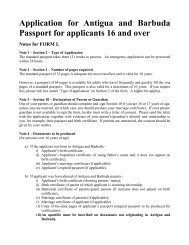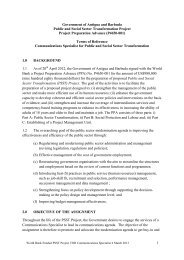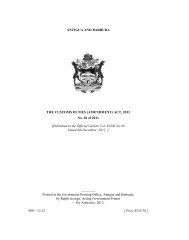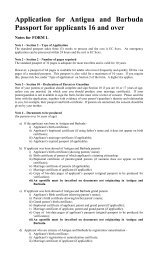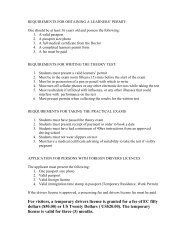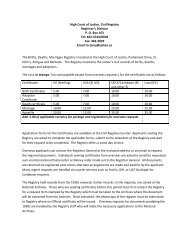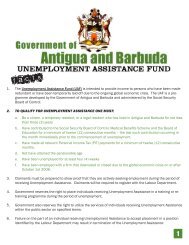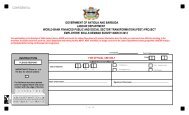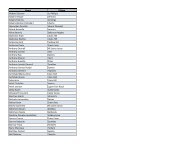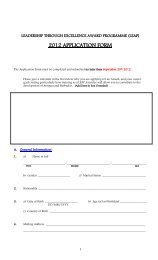BARBUDA'S FIRST CARIBANA - Antigua & Barbuda
BARBUDA'S FIRST CARIBANA - Antigua & Barbuda
BARBUDA'S FIRST CARIBANA - Antigua & Barbuda
You also want an ePaper? Increase the reach of your titles
YUMPU automatically turns print PDFs into web optimized ePapers that Google loves.
When Rupert “Baba” Blaize was<br />
in his teens, he spent most of his<br />
time listening to music, strumming<br />
his guitar and singing some of the<br />
most popular American songs that<br />
made the pop charts. But when Lord<br />
Canary and Zemaki arrived on the<br />
music scene in 1957-58, Baba was<br />
so infatuated by the lyrics, melodies<br />
and rhythms of their calypsos, that<br />
he found himself gravitating towards<br />
that musical genre, wishing that by<br />
so doing, he could inherit a little bit<br />
of the attention and adoration the<br />
calypsonians were receiving from the<br />
general public.<br />
Unfortunately, he had to stifle his<br />
desire to become “Lord Baba” or<br />
“Mighty Baba” because back then,<br />
Calypso<br />
profile<br />
many parents felt it was<br />
socially unacceptable for<br />
their children to be involved in<br />
steelpan playing or calypso singing.<br />
To satisfy his “singer-man” thirst,<br />
Baba indulged in a steady diet of Nat<br />
King Cole, Frank Sinatra, Johnny<br />
Matthis and Bing Crosby’s music.<br />
However, as soon as he realized<br />
his independence, he began<br />
experimenting with calypso. Harry<br />
Belafonte’s version of “Day O”<br />
and Lord Melody’s “Mama Look A<br />
Boo Boo Deh” were down tempo<br />
enough to fit his beginner’s profile.<br />
Eventually, his stints with bands like<br />
“The Entertainers” and the “Gem<br />
Tones” at various hotels prepared<br />
him for the plunge into the calypso<br />
arena.<br />
Yet it was many years later, after<br />
enviously watching King Short Shirt,<br />
King Swallow and others battle for<br />
the Calypso Monarch title that Baba<br />
felt comfortable singing calypso and<br />
Ceceile H. Porter<br />
Ambassador Rupert Baba Blaize<br />
felt confident enough to enter the<br />
calypso arena. He never had a<br />
calypso name. He competed and<br />
performed under his own name. In<br />
1984, he attained some measure<br />
of success when he was adjudged<br />
first runner-up in the Calypso<br />
Monarch competition. That year,<br />
King Progress walked away with the<br />
crown for his renditions, “Madness”<br />
and “You Getting It.” Thirteen<br />
years later, (1997) Baba without a<br />
calypso moniker, decided to enter<br />
the Calypso competition once<br />
again. His two songs, “Yard Fowl”<br />
and “<strong>Antigua</strong>,” which were favorites<br />
among calypso lovers, netted him<br />
the first runner-up spot again, with<br />
King Onyan as the winner.<br />
Convinced that singing a calypso<br />
does not make one a calypsonian,<br />
Baba says, “I view calypso as the<br />
corner stone of our indigenous<br />
culture, and calypsonians as the<br />
guardians of our fragile, progressing<br />
democracy.”<br />
Supporting Carnival Since 1957<br />
For All Your Carnival or National Dress & Accessories<br />
Textiles<br />
Notions<br />
Hosiery<br />
Housewares<br />
�������������<br />
�����������<br />
��������<br />
������������<br />
�������������������������������������������<br />
Arts & Crafts<br />
Bags<br />
Silk Flowers<br />
Dried Flowers<br />
“…..Because Fashion Starts With Fabric”





